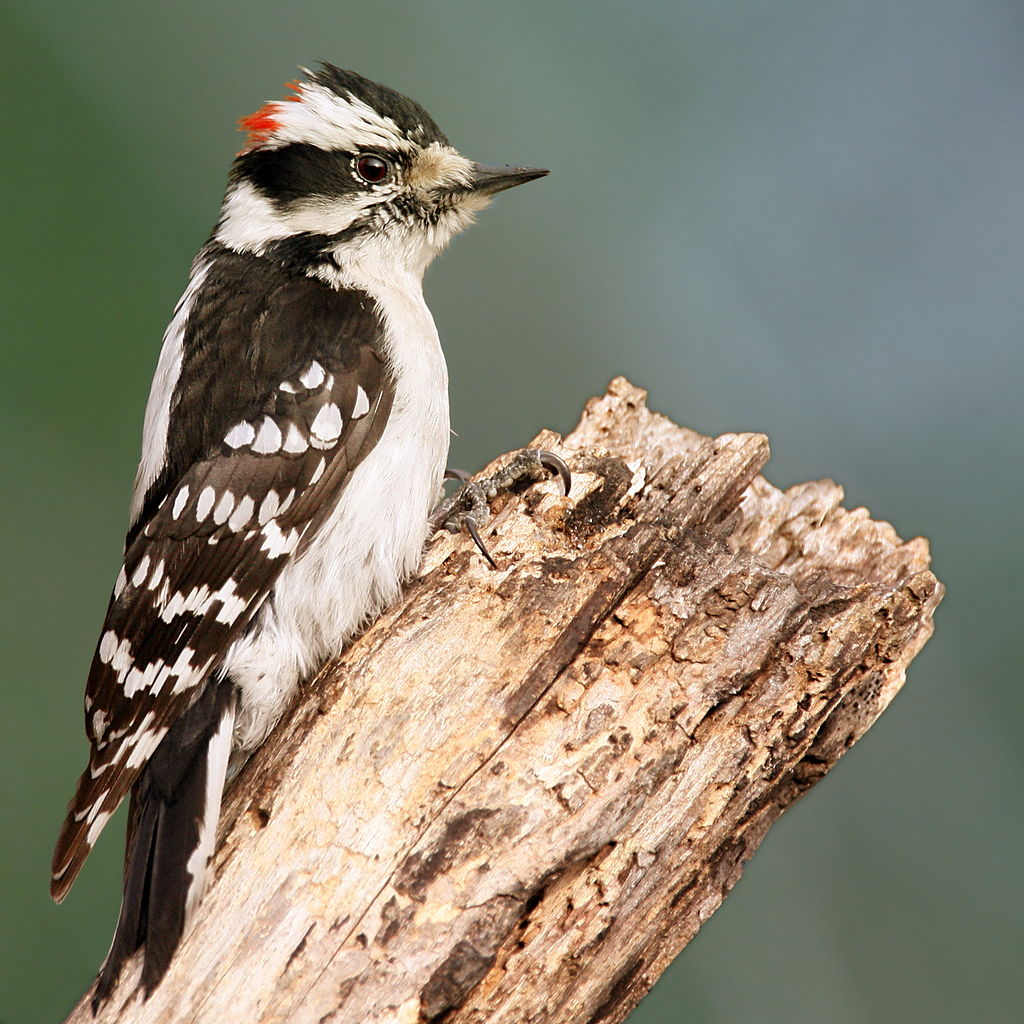Small, But Mighty


From my window I can see . . . a tiny Downy Woodpecker clinging to a tall oak tree! The Downy Woodpecker can travel along the underside of an oak branch as if it were a highway. This smallest member of the woodpecker family is common year-round on Long Island. Woodpeckers are adapted for climbing trees, with two toes on their feet facing forward and two toes facing backward, and a stiff tail, which they use as a brace.
Downy Woodpeckers (Picoides pubescens) are six to six-and-a-half inches long and have black and white stripes on the wings and back, white bellies, and a short bill, about half the width of the head. Size and bill length are field marks that distinguish the Downy from the similar, but slightly larger, Hairy Woodpecker. Males in both species have a red patch on the nape of the neck.
Many woodpeckers feed on wood-boring insects by hammering holes in tree bark to get at the insects underneath. Others specialize in feeding on tree sap (Yellow-bellied Sapsucker) or probe the ground for earthworms (Northern Flicker). In winter, the small size and weight of the Downy means it is able to perch on plant stalks and extricate insect larvae from inside galls on Goldenrod stems. Seeds and berries are also on the menu, so a suet feeder will definitely attract woodpeckers in winter.
The sound of a woodpecker drumming carries through the forest and has a role in territorial behavior as well as in finding food. Males tap on hollow branches to announce their territory and both sexes tap to attract their nearby mate to a possible nest site. Nest cavities are made in the dead limbs of trees or in hanging snags, and are used for only one nesting season.
These sometimes-noisy woodpeckers occupy an important niche in forest ecosystems. Old woodpecker nest holes are used by secondary cavity nesting birds like the Screech Owl, may become winter larders filled with acorns for Gray Squirrels and Eastern Chipmunks, or be enlarged by raccoons for winter dens and homes to raise young kits.
So the next time you take a walk in the woods and hear a woodpecker’s hammering, look a little closer, notice the field marks, and if it’s a Downy, say thank you to one of nature’s smallest forest caretakers.
Melanie Meade is the Education and Outreach Coordinator at the South Fork Natural History Museum in Bridgehampton.



